 WM-2Walkman 2
WM-2Walkman 2

WML ID #2
- Manufacturer
- Sony
- Model
- WM-2
- Nick
- Walkman 2
- Gang
- Pioneers
- Together
- 4
- Year
- 1981
- Made in
- Japan
- Initial price
- 32000 ¥Today 490 $
Technical details, specifications
- Battery
- 2AA
- Battery life
- 9h (with 2)
- Dimensions
- 30*109*80 mm (262 cm³)3D size
- Weight
- 280 gr
- Window
- yes
- Frame
- plastic
- Case
- plastic
- Carry
- clip
- Expandable
- no
- External compartment
- no
- Tape selector
- Manual switch
- Waterproof
- no
- Speaker
- no
- Frequency range
- 40-12000@1, 40-15000@4 Hz
- FMax output
- 2x20 mW
Functions
- DC in
- yes
- Record by input
- no
- Record by int mic
- no
- Hotline mode
- yes
- Cue
- no
- Balance (L/R)
- no
- Phone type
- 1
- Equalizer
- no
- Auto reverse
- no
- Anti rolling
- no
- Logic control
- no
- Hold lock
- no
- Radio
- no
- Remote control
- no
- Wireless headphone
- no
- Indicator
- led
Description
This milestone walkman was the second walkman after the legendary TPS-L2 and set the form factor for the DD line.
The WM-2, or "Walkman II" as it was known, took the mantle from the TPS-L2 as the smallest stereo cassette player in the world, only just larger than the cassette it played.
The main change that made this miniaturisation possible was mounting the tape heads in the lid and arranging for the cassette to be inserted the other way round. Because of this, the heads did not have to retract into the casing for the cassette to be removed, saving a very worthwhile amount of space. The engineering precision required to make this complex arrangement work properly was not inconsiderable, though there were few problems in practice. Not content with simply making the machine smaller, the designers went a step further by making the engagement of the heads power-operated. This allowed the control keys to have a short travel and to be placed on the front of the machine rather than along one edge, reducing the size yet further. To protect the delicate parts, all keys were automatically released if the door was opened.
The small size made stability even more critical than it had been before, so the counter rotating flywheel was beefed up somewhat, now large and heavy enough to make a real difference. As with the TPS-L2, the play key was released mechanically at the end of the tape, and in later versions of the machine, the motor was stopped electronically in the winding modes, using an optical sensor and a reflective disc driven from the supply spool. These later models can be identified by putting the mechanism into rewind with no tape inserted, after a few seconds the red "battery" light should go out and the spindle should stop rotating. Later models can also be identified by the writing on the controls, early sets have "fwd" engraved on them, later ones say "play". The excellent core-less servo motor was carried over unaltered from the TPS-L2, though little else was.
In comparison with the mechanics, miniaturising the electronics to the required degree must have been fairly straightforward, with new and smaller components becoming available all the time. There were three distinct designs used for the electronics, such was the pace of development at this time. Most of the features of the TPS-L2 survived, except for the separate left and right volume controls (a miniature stereo volume control was now available) and the "hot line" microphone. In place of this, the original headphones had a large orange push button where the two leads separated that muted the sound, a similar but less interesting arrangement. The WM-2 retained dual headphone sockets however. The tone switch was also retained, but it was marked for normal and chrome/metal type tapes.
The sleek appearance of the WM-2 was made possible in part by it having no "front" or "back" as such. All faces were styled with equal attention to detail, and unless the cassette-viewing window was visible it did not look obviously like a tape player at all. A battery door would have spoiled the lines, to this was placed inside the cassette compartment. This also made the machine more robust, reducing the chance of the door falling open by accident and the batteries spilling out. So sleek was the basic design that there was no real way of attaching a handle, clip or strap, so a strong plastic holder with a belt clip and attachment points for a shoulder strap was included that it could be clipped into. This too was beautifully designed and made the WM-2 no less attractive.
The WM-2 was the best selling cassette Walkman model of all to date, selling around one and a half million units. Originally only produced in metallic grey, though later black, red and white (rare) versions were offered too.Via Walkman Central (edited


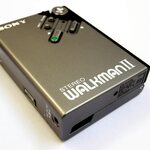

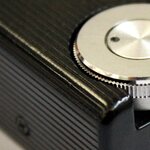



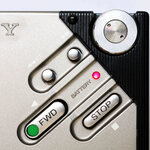







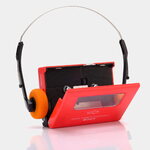



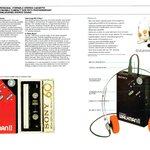


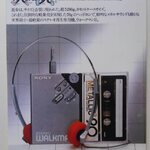
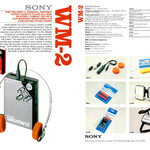
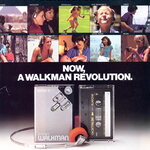


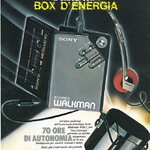
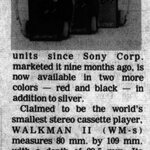
Comments
WML @ 2023-05-31 14:20:18
Youtube commercial: